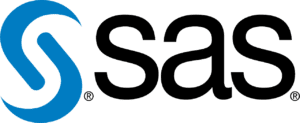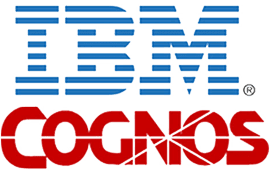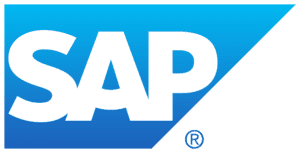How to Select the Best Data Analysis Tools?
Anyone who understands the data analytics software market will tell you that selecting a data analytics platform is complicated. It’s complex because the software is complex – and it’s only getting more complex over time. And it’s complicated by how it must fit into your business; any number of nuanced variables must be weighed for a data analytics tool to fit well with your organization. Review these seven tips and considerations when choosing data analysis software.
1. Data Analytics Methods and Types
When trying to find the perfect tool for your data analytics needs, it’s important that you first understand all of the different methods and types of data analysis that these tools might offer. While some tools will offer a portfolio of some or all of these analytic types, others specialize and dive deep into a specific category of data analytics needs. Some keywords that you should look for in your search for the right data analytics tool are covered below, so do your research to find out which approach best fits your data types and business strategy needs.
- Data Visualization and Modeling
- Data Preparation
- Business Intelligence
- Marketing Analytics
- ETL
- Statistical Analysis
- Predictive Analytics
- SQL
- Industry-Specific
2. Augmented Analytics
Using AI and ML to offer so-called augmented analytics is the biggest buzz in the industry, and most vendors claim to offer some flavor of augmented analytics. However, really understanding what’s under the hood in terms of AI and ML is difficult for a buyer. Make sure you probe the sales rep on this issue, get clear explanations, and don’t hesitate to ask for AI and ML use cases.
3. Types Of Users
How much do your staffers who will be using the app know about data science? Are they true data scientists or sales reps on the run? Some of the data analytics software tools you’ll see below work for either, while some are geared for one or the other.
4. Interoperability with Existing Data System
It’s exceptionally counterproductive to select a data analytics solution that doesn’t interoperate with your data warehouse and your ETL tools. Furthermore, does it work with your database and storage infrastructure? This may require a trial run.
5. Scalability
Data analytics solutions are hard – very hard – to replace. Because this is true, it’s critically important to select a solution that will grow with you over time. That is, will it handle an increasing number of queries based on large data sets? And also: can this vendor be expected to offer an array of next-gen features in the years ahead?
6. Cohort Of Experts
Some solutions have full communities of users built around them, so hiring an expert is a relatively easy (and inexpensive) task. Other solutions are also quite advanced, but you’ll not find a big pool of experienced pros for hire. Given how expensive data scientists are, you don’t want to make your recruitment any harder than it has to be.
7. New Vendor or Legacy
Some of the vendors in the data analytics sector have been household names for decades. Yet given how lucrative the sector is, new entrants have launched in the last several years. These new vendors may very well be a viable choice, even if their solution doesn’t have the track record. Are they willing to work with you on training and price? Perhaps more so than legacy vendors. Then again, would you sleep better at night with a legacy vendor?
Top Big Data Analytics Tools & Software
Tableau
 KEY INSIGHT: Even among market leaders, Tableau is a top vendor in the data analytics software tools market. The company was acquired by Salesforce in 2019.
KEY INSIGHT: Even among market leaders, Tableau is a top vendor in the data analytics software tools market. The company was acquired by Salesforce in 2019.
Tableau has built a large and enthusiastic user base due to the depth and quality of its data visualizations. The company’s data analytics platform is known for collecting multiple data inputs, allowing users to combine them, then offering a dashboard display that enhances visual data mining.
Furthermore, data can then be arranged and rearranged to create hierarchical and bin structures with relative ease. All of this advanced data manipulation can be accomplished by staff without an extensive background in data science, yet the Tableau platform is robust enough to reward a user with data science education.
PROS:
- Tableau has been a data analytics market leader due to its data visualizations. With its acquisition by Salesforce, it’s expected that enhanced capabilities in AI and ML will continue to grow rapidly.
- A good fit for companies of almost all sizes, from large enterprises to SMBs.
- The Tableau Online solution offers a wide array of deployment options for a multi-cloud environment.
CONS:
- Some users would like to see expanded admin and governance functionality.
Microsoft Power BI
 KEY INSIGHT: Driven by its Azure Cloud, Microsoft is the leader in hybrid cloud. The company’s Power BI platform benefits from this strength.
KEY INSIGHT: Driven by its Azure Cloud, Microsoft is the leader in hybrid cloud. The company’s Power BI platform benefits from this strength.
In classic Microsoft fashion, the company’s related software products help promote its Power BI analytics tool. For instance, reminders in Excel and Office 365 urge users to adopt it. Consequently, between this built-in advertising and the software giant’s already-sprawling user base, Power BI can justifiably be called the most popular analytics program on the market. This is important because a large user base prompts constant product upgrades, which Power BI certainly benefits from.
Most important: with its deep pockets, Microsoft has built an impressive array of AL and ML functionality, powering the augmented analytics that has become the key differentiator in the data analytics sector. For example, image analytics – clearly a step ahead – are driven by Power BI’s AI feature set.
Significantly, these ML and AI features are driven by the Azure functions built into the Azure Cloud, which are industry-leading.
PROS:
- Top AI and ML tools offer augmented data analytics
- Very well respected among its large user base
- No company has a more extensive software product portfolio than Microsoft, and Power BI benefits from interoperability with this exhaustive toolset
CONS:
- The on-premise-only version of Power BI does not offer the depth of functionality offered by the cloud version
- Users must run the product in the Microsoft Azure cloud, as opposed to the other competing clouds that many companies also use
Qlik
 KEY INSIGHT: If your organization seeks to use ML and AI to enhance the quality of data mining, the Qlik Sense is a top choice.
KEY INSIGHT: If your organization seeks to use ML and AI to enhance the quality of data mining, the Qlik Sense is a top choice.
With two decades under its belt, Qlik’s combination of strengths offers a compelling vision in the data analytics sector. Chief among them: the company has advanced versions of artificial intelligence and machine learning built into its Qlik Sense platform. And it offers this functionality without requiring deep data science skills, so sales reps and mid-level staffers can leverage AI for data mining.
Also important: Qlik Sense is cloud-agnostic, so companies can deploy the data analytics tools to any cloud in their multi-cloud infrastructure. They can also deploy on-prem, and then hook the application into the cloud for a hybrid data analytics approach.
PROS:
- The company’s associated insights feature promises to deploy a cognitive application to dig for insights that users might miss.
- Very flexible and strong across public, private, and hybrid clouds.
- Enables upper-level self-service analytics for data scientists, or for users with minimal data science training.
CONS:
- While its product offering is strong, its overall vendor profile is not as high as industry giants like Microsoft or even Tableau.
ThoughtSpot
 KEY INSIGHT: While not as well known as some other data analytics software vendors, ThoughtSpot offers a next-generation “search first” tool that earns it a berth as a leader in the market.
KEY INSIGHT: While not as well known as some other data analytics software vendors, ThoughtSpot offers a next-generation “search first” tool that earns it a berth as a leader in the market.
ThoughtSpot offers any number of compelling features, particularly an AI-based recommendation system that leverages crowdsourcing. Additionally, sources for its query options range from a legacy provider like Microsoft to a “new kid on the block” like Snowflake.
But most attractive of all, ThoughtSpot’s calling card in a crowded market is its search-based query interface. Users can input a complex analytics query – by typing or speaking – and the ThoughtSpot platform uses augmented analytics to offer insight. Impressively, it can handle large data queries, with many users sifting through more than a terabyte of information. All of this is accomplished – from comparative analysis to anomaly detection – with no software code required. So business staff can data mine without the help of experts.
PROS:
- The search interface allows easy queries of complex questions, analyzing billions of data rows with artificial intelligence.
- Founded in 2012 as a growing company, the company has ridden the wave of enterprise analytics to a solid niche in the analytics sector.
- Well regarded for its ability to scale and handle ever-larger query loads.
CONS:
- Without the large product portfolio of some vendors, users will need to bring their own related tools, like data preparation applications.
MicroStrategy
 KEY INSIGHT: In a bold move, MicroStrategy envisions itself as the foundation of enterprise analytics, by connecting various competing platforms into a unified system.
KEY INSIGHT: In a bold move, MicroStrategy envisions itself as the foundation of enterprise analytics, by connecting various competing platforms into a unified system.
In a highly competitive data analytics market, where each vendor is trying to top the others, MicroStrategy seeks to join them together. Its platform includes API connectors that join competing platforms while – of course – using MicroStrategy as the unifying layer. In a related technique, the company connects all business content from browser-based systems, like CRM and ERP (and competing analytics software), and then offers it as an easy-to-consume analytics dashboard.
As soon as a user moves their mouse over a link, the data appears – offering updated, real-time data insights through the workday.
Additionally, users who can code can leverage MicroStrategy to quickly insert or update a diverse array of data sources from mobile or across the Internet. This easy update from multiple sources plays into MicroStrategy’s “connector” strategy and is well regarded in the data analytics sector.
PROS:
- MicroStrategy’s Hyperintelligence linking technology is an innovative twist that may launch it into a leading position in the years ahead.
- Well respected for the stability of its platform, with little or no problem with bugs or downtime.
CONS:
- Does not have a high profile in the data analytics market.
Sisense
 KEY INSIGHT: A sophisticated, forward-looking platform that is well-suited to complex, ongoing data processing – Sisense is great for the power user, but not so much the untrained staffer.
KEY INSIGHT: A sophisticated, forward-looking platform that is well-suited to complex, ongoing data processing – Sisense is great for the power user, but not so much the untrained staffer.
It’s clear that Sisense is committed to a forward-looking data analytics platform. The company reimagined and then largely rebuilt its platform to leverage the advantages of a cloud-native infrastructure.
Among these advantages is great scalability. Sisense drives cloud-native applications at scale in tandem with container technology. As your data needs grow, the platform will surely keep up in the years ahead as cloud platforms get faster and more flexible.
To drive still greater speed and performance, Sisense’s ElastiCube uses its own caching engine, which deploys in-chip and in-memory data crunching. Elasticube boosts the platform’s augmented data prep features. Additionally, Sisense acquired Periscope Data to increase its upper-level data processing features.
PROS:
- Strong support for cloud-native applications.
- Proprietary caching engine enables faster speeds.
- Able to handle a wide array of difficult enterprise analytics workloads.
CONS:
- Geared for advanced users, especially data scientists, instead of off-the-cuff business queries.
TIBCO
 KEY INSIGHT: TIBCO is a solid platform with ML-augmented data analytics that work for either enterprise data scientists or for lesser-trained staff.
KEY INSIGHT: TIBCO is a solid platform with ML-augmented data analytics that work for either enterprise data scientists or for lesser-trained staff.
In a world where data is rarely at rest, gaining real insight from streaming analytics offers a major competitive advantage. This is one of TIBCO’s strengths. The company’s streaming analytics tools offer data mining on the run, with trend knowledge gained from the torrents of data streamed from IoT or other mobile devices.
Additionally, TIBCO Spotfire has advanced augmented analytics, driven by machine learning and featuring a natural language user interface. This ML capability has become one of the key “must-haves” in the data analytics sector.
To fill out its portfolio, Spotfire has data prep tools and data visualizations that users can poke and prod for further insight. All of this adds up to a stable, robust data analytics platform that works for the enterprise or for so-called citizen data scientists who might not have as much training.
PROS:
- Well regarded for its intuitive user interface.
- Well-developed, feature-rich data analytics software platform.
- Includes a large menu of drag and drop analytic functions to speed up data mining.
CONS:
- There are not as many experienced users of TIBCO, given that the vendor has a lower profile than some analytics leaders.
SAS
 Key insight: A complete, well-developed data analytics portfolio that can support all of a large enterprise’s data mining process.
Key insight: A complete, well-developed data analytics portfolio that can support all of a large enterprise’s data mining process.
With decades in the software business, SAS offers a fully mature program that satisfies the demanding queries of data scientists, yet is also accessible to lesser-trained staff. In keeping with current trends, SAS has upgraded its augmented analytics tools – the use of ML, AI, and automation is now the key demand of analytics customers.
SAS’s well-developed portfolio is geared for the full scope of data analytics requirements. This ranges from complex model construction to analysis, to data prep, to the ability to monitor and manage data trend lines. All of these capabilities are offered in a unified platform, with interactive visualizations of the models. Each of these features is supported by ML, automation, and AI. To assist users, the platform outputs machine-driven predictions, which can greatly expand the query process.
The company’s SAS Visual Analytics platform – in keeping with the times – leverages microservices and the cloud for greater scalability and more flexible performance.
PROS:
- Extensive use of advanced ML and AI tools to aid human-driven queries.
- A unified data analytics portfolio that enables all aspects of next-gen data mining, from prep to visualization.
- A large user base across the globe, which provides an extensive cohort of SAS experts for hire.
CONS:
- Some users view the platform as expensive.
IBM
 KEY INSIGHT: IBM is a top contender, particularly for those enterprises that are already focused on the IBM enterprise platform – the integration among data products is notable.
KEY INSIGHT: IBM is a top contender, particularly for those enterprises that are already focused on the IBM enterprise platform – the integration among data products is notable.
IBM Cognos Analytics is a platform that combines both enterprise-level managed and self-driven query work, along with augmented analytics and advanced reporting. In an improvement, Cognos now includes much of the functionality of IBM Watson. The platform can generate natural language processing and – impressively – natural language generation. It can also perform time series forecasting, which is the ability of a data model to forecast upcoming events based on historical context.
In a forward-looking twist, Cognos is built to offer insights into social data. It also offers data prep that is assisted by AI functionality, which can save many hours of human staff time.
In a bid to serve as many analytics customers as possible, IBM offers any number of cloud and multi-cloud usage options, from IBM’s own public cloud to any of the other cloud leaders. And of course on-prem is also possible.
PROS:
- The robust functionality of Watson is built into the already advanced toolset of Cognos.
- The interoperability between other elements of the IBM data portfolio is well regarded.
- An extensive array of deployment options across cloud and on-premise.
CONS:
- The platform is best suited to customers that are already leveraging other products in the IBM suite of products.
SAP
 KEY INSIGHT: SAP offers strong functionality with augmented analytics, making this data analytics tool a top contender.
KEY INSIGHT: SAP offers strong functionality with augmented analytics, making this data analytics tool a top contender.
A compelling feature of SAP Analytics Cloud is the extent to which it integrates a wide array of analytics functionality into a single cohesive solution. This includes advanced predictive analytics and planning functions, as well as core analytics. Additionally, the company has a significant track record with augmented analytics. Rounding out the platform are natural language processing and natural language generation – that is, the analytic metrics are transformed, in essence, to natural conversational language.
To assist with data mining, which is driven by open-ended exploration, SAP Analytics Cloud performs “what if” processing. To speed up the process – a key advantage – the SAP solution also offers a menu of pre-written templates, models, and trend line stories to move the process along without reinventing the wheel every session.
Filling out the capabilities – and in keeping with the extensive integration mentioned above – SAP Analytics Cloud ties into the SAP Data Warehouse Cloud.
PROS:
- A fully integrated product portfolio offers essentially complete analytics functionality in one solution.
- An API menu enables connections with embedded solutions.
- Its cloud-native multi-tenant approach is contemporary and in keeping with today’s key emerging technologies.
CONS:
- For those organizations seeking an on-premise solution, SAP Analytics Cloud is not a fit.
Comparison Chart of Big Data Analytics Tools
|
Company
|
Key Products
|
Differentiators
|
Cost
|
| Tableau
|
Tableau Online
|
· Acquired by Salesforce, so benefits from deep resources. |
· The Tableau Creator level is $70/user/month |
|
Microsoft
|
Power BI |
· Analytics tools tie into company’s extensive product portfolio |
· Power BI Pro is $9.99/user/month |
| Qlik
|
Qlik Sense
|
· Strong in ML and AI |
· Qlik Sense Business is $30/user/month |
| ThoughtSpot
|
ThoughtSpot |
· A next-gen search tool aid queries |
· Pricing available upon request |
|
MicroStrategy
|
The MicroStrategy Platform |
· Connects analytics platforms |
· Pricing available upon request |
| Sisense
|
The Sisense Platform
|
· Excellent choice for the power user |
· Pricing available upon request |
|
TIBCO
|
TIBCO Spotfire
|
· Good flexible fit for data scientists or mid-level staffers |
· Pricing available upon request |
|
SAS
|
SAS Visual Analytics |
· Uses microservices and the cloud to boost performance |
· Pricing available upon request |
|
IBM
|
Cognos Analytics |
· Very well suited to companies that already use other IBM solutions |
· Cognos Analytics On Demand is $15/user/month |
|
SAP
|
SAP Analytics Cloud
|
· Top NLP and NLG, which boosts usability
|
· Analytics Cloud Business Intelligence level is $22/user/month |



Why Use Data Analysis Software?
Data analysis tools enable businesses to analyze vast stores of data for great competitive advantage. Data analysis software can mine data that tracks a diverse array of business activity – from current sales to historic inventory – and process it based on data scientists’ queries.
Many related technologies allow analytics software to create its results. Chiefly, these include data warehouse tools, ETL tools, and – now more often – cloud computing infrastructure. These tools allow data insights ranging from predictive analytics, business intelligence (a term often used interchangeably with data analytics), and structured and unstructured data.
We will go over the following top tools used for data analytics:
Does Data Analysis Software Use Machine Learning?
As big data analytics tools evolve, they make increasing use of artificial intelligence and machine learning. This AI and ML enables “augmented analytics,” meaning query results have greater depth and detail due to the advanced technologies.
Leading Business Intelligence Solutions
Domo
Visit website
Domo puts data to work for everyone so they can multiply their impact on the business. Underpinned by a secure data foundation, our cloud-native data experience platform makes data visible and actionable with user-friendly dashboards and apps. Domo helps companies optimize critical business processes at scale and in record time to spark bold curiosity that powers exponential business results.
Learn more about Domo
TABLE OF CONTENTS
The results of a data query are displayed in data analysis software using an elaborate visual dashboard, typically with a series of color-coded charts and graphs that illustrate business trend lines. These dashboards can be customized based on the input of staff. They can also be tweaked over time to produce a more specific representation.
These real-time visualizations of data are now a critical navigation device for most businesses. Many factors are driving the growth of the data analysis software market, but in sum: there is hardly a business today that can effectively compete without the insight from data analytics software tools.